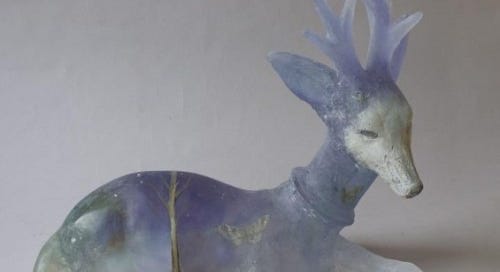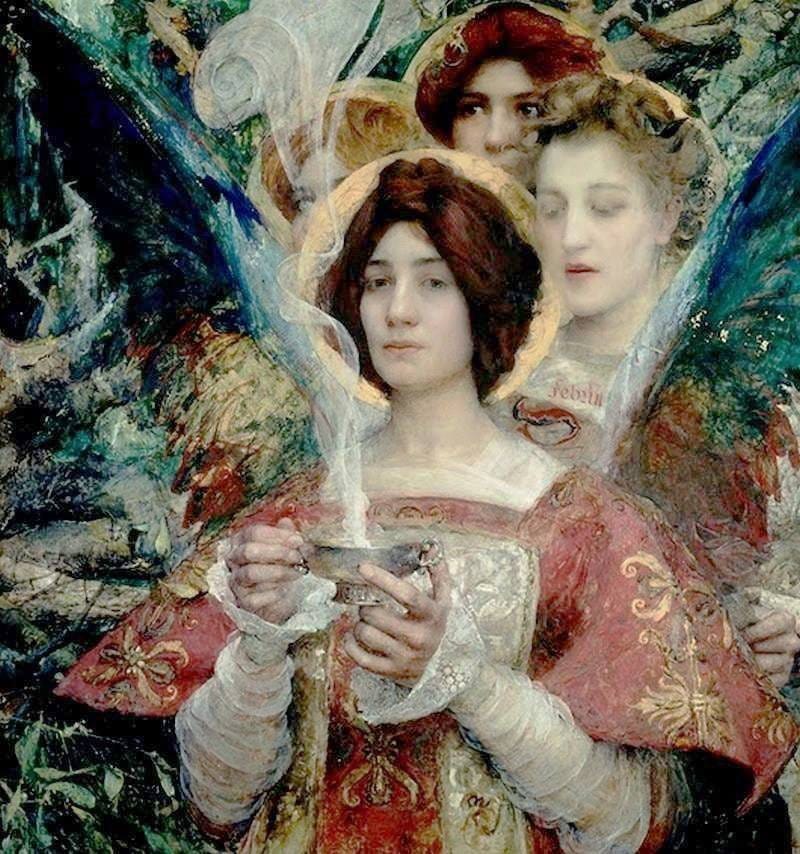Welcome to the Groves of Symbols: let's take a walk together
A blog that's nerdy and dirty under the fingernails
A warm welcome
Thank you for visiting my blog, In the Groves of Symbols. I’m standing at the threshold, welcoming you into this strange realm. Here, I will be sharing spinoff and parallel material that relates to my writing projects, starting with explorations of themes from my recently-published work of nonfiction, The White Deer (RITONA, 2023).1
One year into this project — the blog — I can say that writing it has been one of the greatest pleasures of my life. This has been a “lazy” year, in that I didn’t produce a book, but I did publish approx. 100,000 words here and in articles written for A Beautiful Resistance.
All my writing here is free to access, and it appears at irregular intervals. Generally, that means a little more than once per month, and sometimes it comes in clusters. The first few articles analyze the figure of the white deer, looking at it from different angles and poking into corners that, for various reasons, I couldn’t explore in the book manuscript. The possibility of using illustrations adds a new dimension to the written text, and that’s part of why I’m hooked on this format!
Oh, and 100% of it is written by me, a flesh-and-blood woman, and none of it is generated, optimized, or SEOd by bots.
Anthony Machuca, The Golden Bough.
This is not a blog about my personal life or about interests — such as gardening and cooking — outside of writing, nor does it offer hot takes on current political and social affairs. Mostly, I’m doing engaged analysis of myths and legends, ecology, and art from an integrated ecomythical perspective. But I also find time to share a few dank memes (and spill hot tea on Ludwig Wittgenstein).
These essays that wander some of the less-traveled thickets in the woods and in the library stacks are a rather niche affair – I’m not trying to win an online popularity contest. But if you’re weird in the ways I am, or if you appreciated these kinds of explorations, I welcome you to these Groves.
Eventually, I may discuss some of my other works, such as my dystopian novel Swarm Box, my historical/occult novella Holy Fire: A Diabolical Pastorale, a novelette that offers a mashup of IRB (institutional ethics boards) instructional videos and the Barbie movie, and a nonfiction project that analyzes humans’ positive relationships with wolves. But in all these cases, I’m waiting to hear from publishers, and cannot spill more beans than this.
Getting started: analyzing the art in a hart
Let’s take a look at how this is going to work: the image below shows an original glass sculpture by Christina Bothwell; it is an extraordinary work of art, not only technically but also symbolically. First, note the collar on this little hart: it's a sign that the animal is under royal protection. At the same time, you can see that the tree inside it is either dormant or dead. I find it significant that a fey whiteness seems to be seeping in from his face and hooves, and the green looks like it's moving out the back side. Yet, there is still a butterfly, which is either utterly out of season or is a symbol of hope, and there's also a snail hanging around near his right front foot. They may have somehow emerged from the last remnants of green, or they may have even come from dormant/latent sources, as described in some mystical traditions. What we see here is that the land has its own powers of resilience, and the deer's body is a site of struggle between forces of destruction and regeneration.
Behind the blog’s name
In the Groves of Symbols was taken from Charles Baudelaire’s poem “Correspondances” in his Flowers of Evil. I prefer this translation by James McGowan over others for several reasons, including the more human-made sense of “grove” versus other translators’ choice of “forest” and the resonances of “regard” that go deeper than “glances,” which are implied to be superficial.
Here is the first stanza:
Nature is a temple, where the living
Columns sometimes breathe confusing speech;
Man walks within these groves of symbols each
Of which regards him as a kindred thing.
Let me share how I read these lines:
“Nature is a temple” = it isn’t simply there; we have created this concept as a way of making it holy and a reminder to treat it with reverence.
“the living columns” = it is composed of living things
“sometimes breathe confusing speech” = we attempt to read messages or omens from the temple of Nature; however, what is confusing to us is as automatic as breathing for the natural world — emitting messages is simply part of what it is and does.
“Man walks within these groves of symbols” = we move among our interpretations of what we see and what it means. The temple is all of Nature, but we walk within this grove that is created in the interaction between what is emitted by Nature itself and what we believe or understand of it.
“Each of which regards him as a kindred thing” = we ourselves are made up of that which we do — and what we do is interpret and make meaning out what we experience. Quoting Anais Nin, “We see things not as they are, but as we are. Because it is the ‘I’ behind the ‘eye’ that does the seeing.” Naturally, this doesn’t mean that there isn’t a “real” world. Rather, that the way we see it is particular to the eye/I that we have developed as a sensory interface. While at the same time, we are also seen and interacted with by the symbols.
To wit: both the message and the messenger have perceptual intelligence, and the recipient is being regarded: that is, observed, judged, and perhaps even considered fondly as “kin” by what he or she may have previously only considered a “background” or “environment.”
Imaginary Gardens, by Sarah Jarrett.
My first full article, White Deer as Symbols of Worldly and Spiritual Power is already published. Why not take a look?
If you know anyone else who might be interested in walking through these groves with us, please share the email or the page link and encourage them to subscribe.
Edgar Maxence, The Soul of the Forest (1898).
The White Deer is, to my knowledge, the only book-length monograph dedicated to surveying and analyzing the motif of a very fey creature which has haunted our arts and culture for millennia. But it is much more than that: it’s a diagnosis of our ecological crisis and a prescription for the renewed health of individuals and their bioregions. The book is structured as a noir story in which readers become familiarized with processes that seem to be separate from themselves, and learn how to reintegrate in a wiser way. It unravels “what ideas we think other ideas with and what stories we tell other stories with, what knots knot knots, what thoughts think thoughts, what descriptions describe descriptions, what ties tie ties. It matters what stories make worlds, what worlds make stories” (Donna Haraway, Staying with the Trouble: Making Kin in the Cthulucene, 12), and it teaches you how to re-enchant your life. If this sounds like something you’d like to read, here is where you can get a get a copy in your choice of paperback, hardback, or digital edition.








Came across your blog and wanted to drop a line of appreciation. I see many interesting articles here that I'm putting on my list to read. I'm a TCM pracitioner, herbalist and creative, and I'd be happy to connect on this platform :)